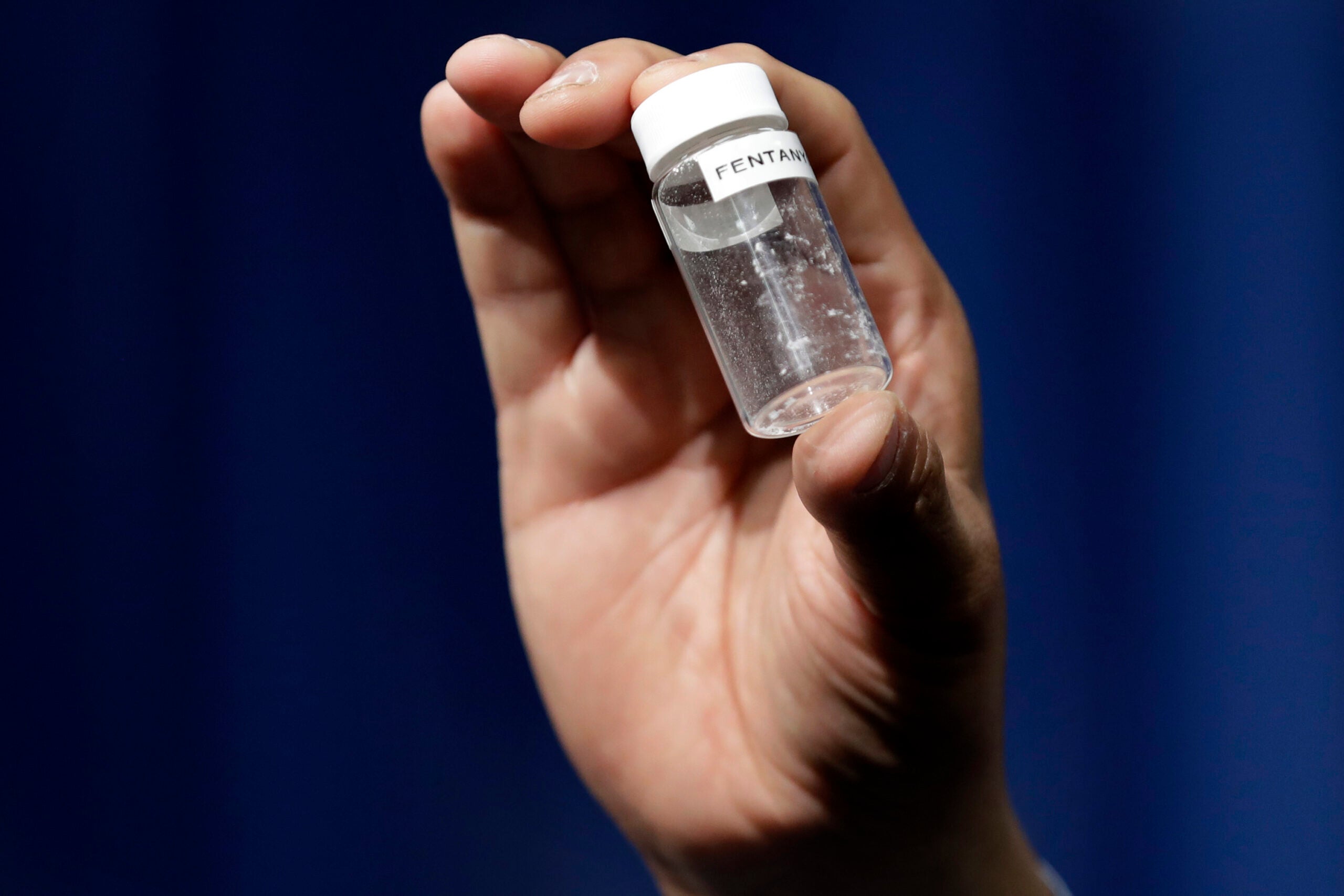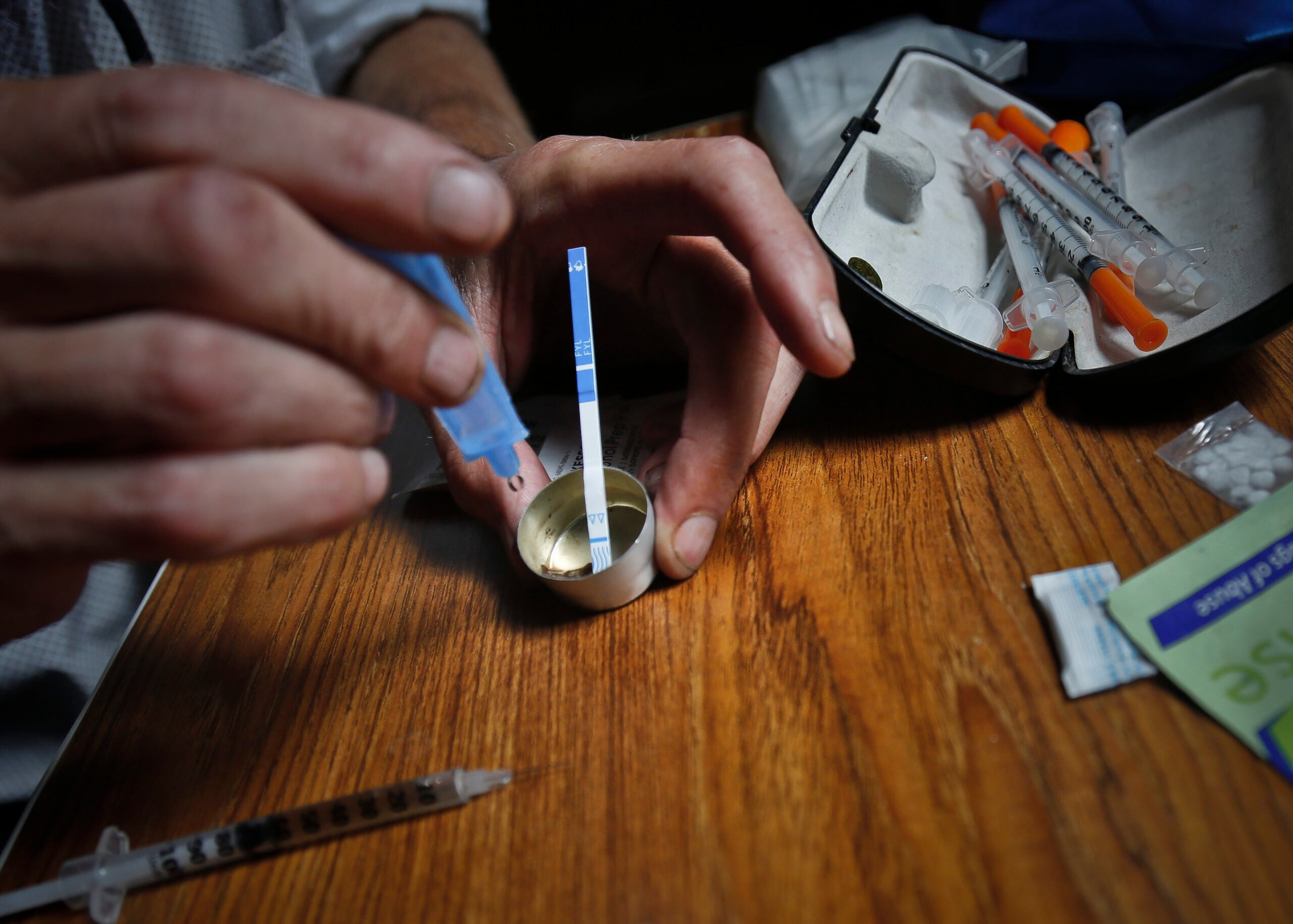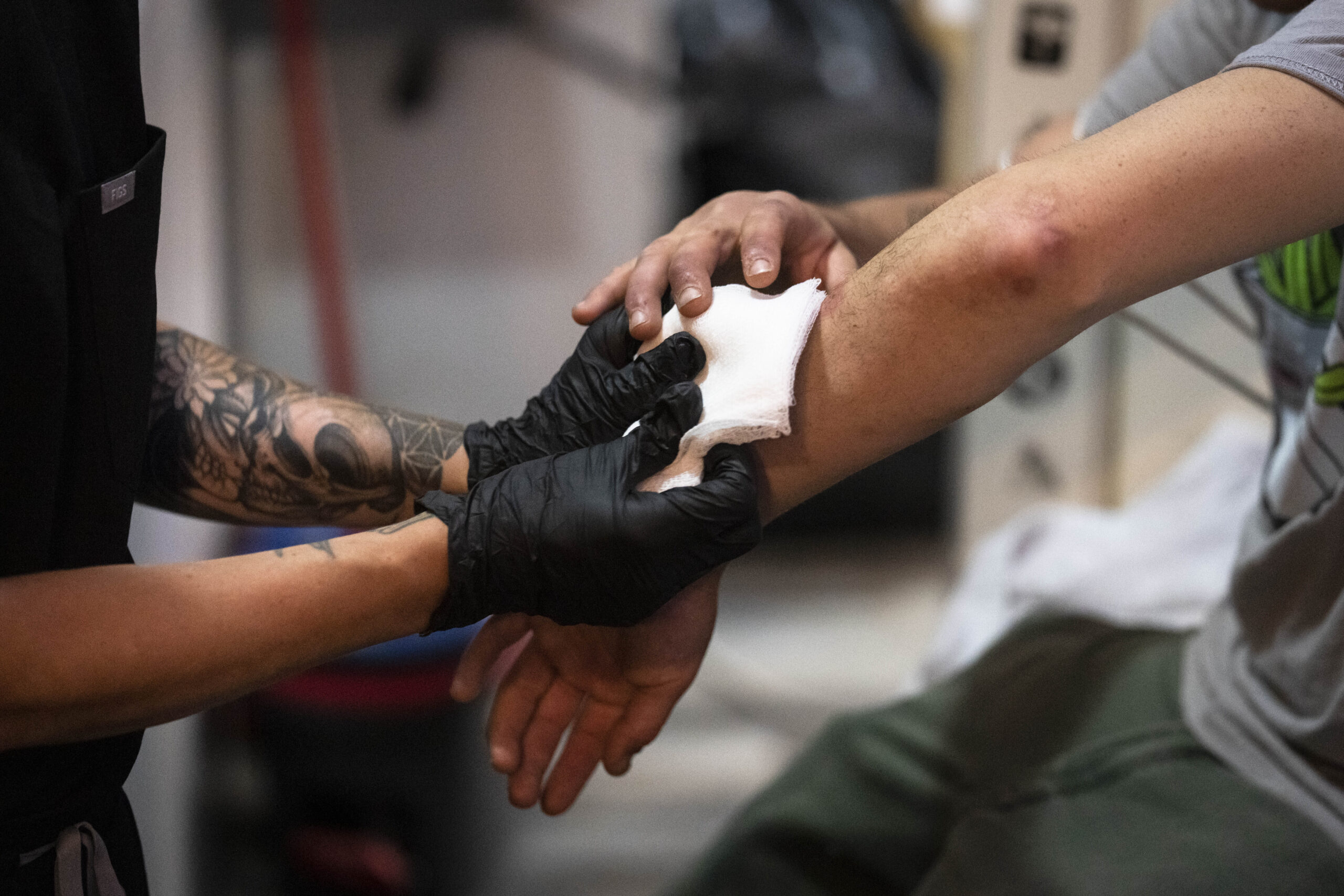The opioid epidemic across the nation and in Wisconsin is shifting to a more dangerous type of drug. Prescription medicines and heroin are still a problem, but higher-potency drugs like fentanyl and carfentanil are becoming an increasing concern. Both the state Department of Justice and Department of Health Services are warning first responders to be careful.
In June of this year, the U.S. Drug Enforcement Agency cautioned police and paramedics against coming in contact with fentanyl and carfentanil. This led to a flurry of reports across the nation about accidental overdosing.
A state health official couldn’t say how often it occurs here. The state is focused on preventing accidental overdose by disseminating guidelines from the Interagency Board for Equipment Standardization and Interoperability, or IAB.
Stay informed on the latest news
Sign up for WPR’s email newsletter.
“I’m aware of at least one possible incident here in the state. A lot of this is self-reported. It’s something we look into closely in the state when we hear about it. And that’s why we’re really trying to push out these guidelines,” said Jon Meiman, an epidemiologist with the state DHS and chief medical officer for the agency’s Bureau of Environmental and Occupational Health.
Most routine encounters between patients or detainees and EMS or law enforcement do not present a significant threat of toxic exposure. “While there are anecdotal reports of public safety personnel being exposed to opioids during operations, they are largely unconfirmed,” according to the IAB.
But first responders want to avoid exposure to even small amounts of fentanyl and other synthetic opioids because of their potency. Fentanyl is 50 to 100 times more potent than morphine. It’s also 30 to 50 times more powerful than heroin.
“Some of these newer, illicitly-manufactured drugs are quite potent. So we want to make sure that everyone who could potentially come into contact, especially first responders, are taking appropriate protections.” said Meiman.
Both the DEA and the IAB recommend using protective measures such as gloves, eyewear and shoe covers to avoid synthetic opioids that may be in the form of powders, liquids, nasal sprays or pills.
“If you’re dealing with very small amounts of unknown substances, making sure that you recognize the signs of potential overdose and are protecting your hands and making sure you are not having exposure to your face, all the way up to protection that you would need in a larger scale response for, say, a drug repackaging or processing area,” said Meiman.
The U.S. Centers for Disease Control and Prevention also put out a report warning first responders about synthetic opioids in 2016. State health and justice officials decided to disseminate the IAB report.
“They were all heading in the same direction. But we found this is the one that had really done a good job distilling the information in a way that was easily understandable and translatable for every level of response,” Meiman said.
This isn’t the first time the state health department has issued guidance for first responders. They’ve done so on a variety of issue, for instance preventing infection. But avoiding accidental drug exposure is a new concern, Meiman said.
Wisconsin Public Radio, © Copyright 2024, Board of Regents of the University of Wisconsin System and Wisconsin Educational Communications Board.





